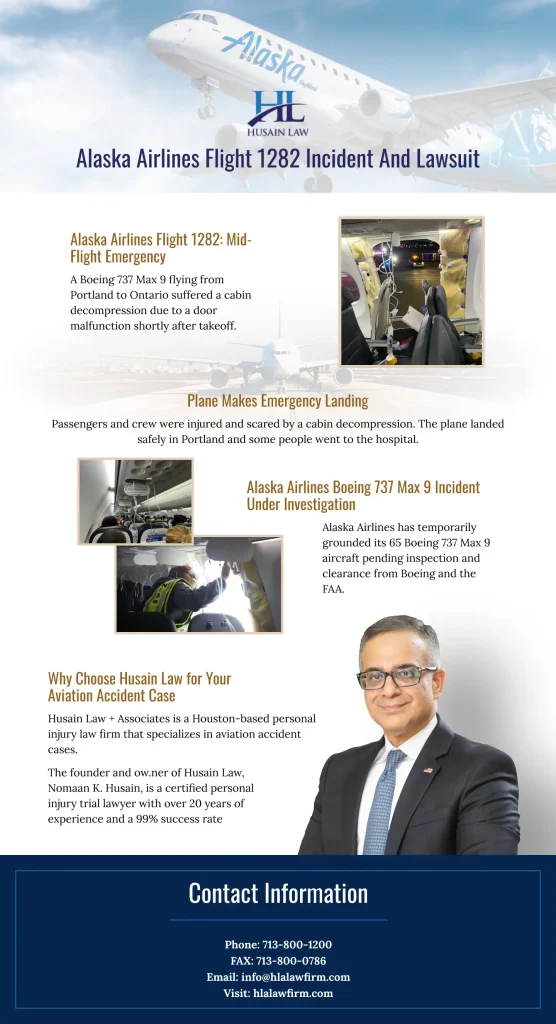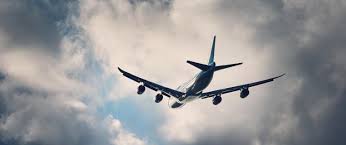Can Injured Passengers Sue Over This Incident?
As we discussed previously, the explosive decompression on Alaska Airlines flight 1282 led to several passenger injuries consistent with intense wind blast and flying debris. While fortunately no lives were lost, these travelers undoubtedly endured a terrifying ordeal now compounded by physical harm. It raises an important question – do these passengers have viable legal recourse to sue and seek damages?
The answer is likely yes – injured passengers can bring lawsuits under a few avenues that could establish liability. However, succeeding with a claim and actually recovering compensation depends greatly on the case details. As you consider pursuing litigation, be aware it often entails lengthy proceedings weighing complex factors.
Let’s break down your options should you wish to file suit over injuries sustained on AA1282.
Possible Targets of Litigation
If moving forward with legal action after this incident, who exactly should you name as defendant? Several parties potentially share responsibility here:
Alaska Airlines
As the direct air carrier operating flight 1282, Alaska Airlines could face allegations they failed keeping passengers safe. Plaintiffs may argue proper aircraft inspection and maintenance processes were not followed. However, the airline will likely highlight compliance with all FAA safety regulations.
Boeing
Given the 737 MAX 9 airframe itself experienced structural failure, Boeing may also be included as defendants. Lawsuits could claim negligence in fuselage section design or manufacturing. Nonetheless, Boeing will cite Alaska’s maintenance duties plus the aircraft’s certified airworthiness.
Subcontractors
Specialist subcontractors conduct 737 maintenance and modifications. If errors by technicians installing or servicing the plug assembly caused it to dislodge, injured passengers could target these third-parties. Identifying a specific party at fault becomes key.
Federal Government
While difficult to directly sue agencies like the FAA themselves, their role certifying the 737 MAX airworthy may be challenged. However, outcomes here are unlikely to benefit injured passengers directly.
Ultimately, your legal team can evaluate all options and guide who best to name as defendants. But gathering substantial evidence of negligence or liability rests on official incident causes.
Steps for Pursuing Litigation
If deciding to move ahead with lawsuits seeking damages over sustained injuries, several key early steps include:
1. Document All Injuries
Thoroughly document injuries and healthcare needs with medical records from both emergency personnel and ongoing specialists. These substantiate physical, psychological, and financial impacts – key for building a case.
2. Consult Aviation Attorneys
Retain qualified attorneys experienced specifically in aviation accident law. They best understand complex legal frameworks governing air travel and transportation disasters. An experienced lawyer also manages extensive paperwork.
3. Join Interest Groups
Connect with other injured passengers from flight 1282 interested in legal action. Plaintiff groups sharing information and resources often achieve better outcomes. Discuss experiences and collectively identify ideal attorneys.
4. Monitor Official Investigation
Importantly, monitor progress of the NTSB investigation into the root cause. Conclusions substantially impact avenues for litigation by assigning liability or negligence. Timelines here may extend years.
5. Calculate Damages
Account for all damages – both already incurred and expected future expenses due to long term health impacts – quantifying totals for demanded compensation. Track costs from medical bills, lost income, pain and suffering.
Laying this groundwork positions injured passengers to launch lawsuits once investigations establish fault for the blowout. But it remains a complex legal process.













